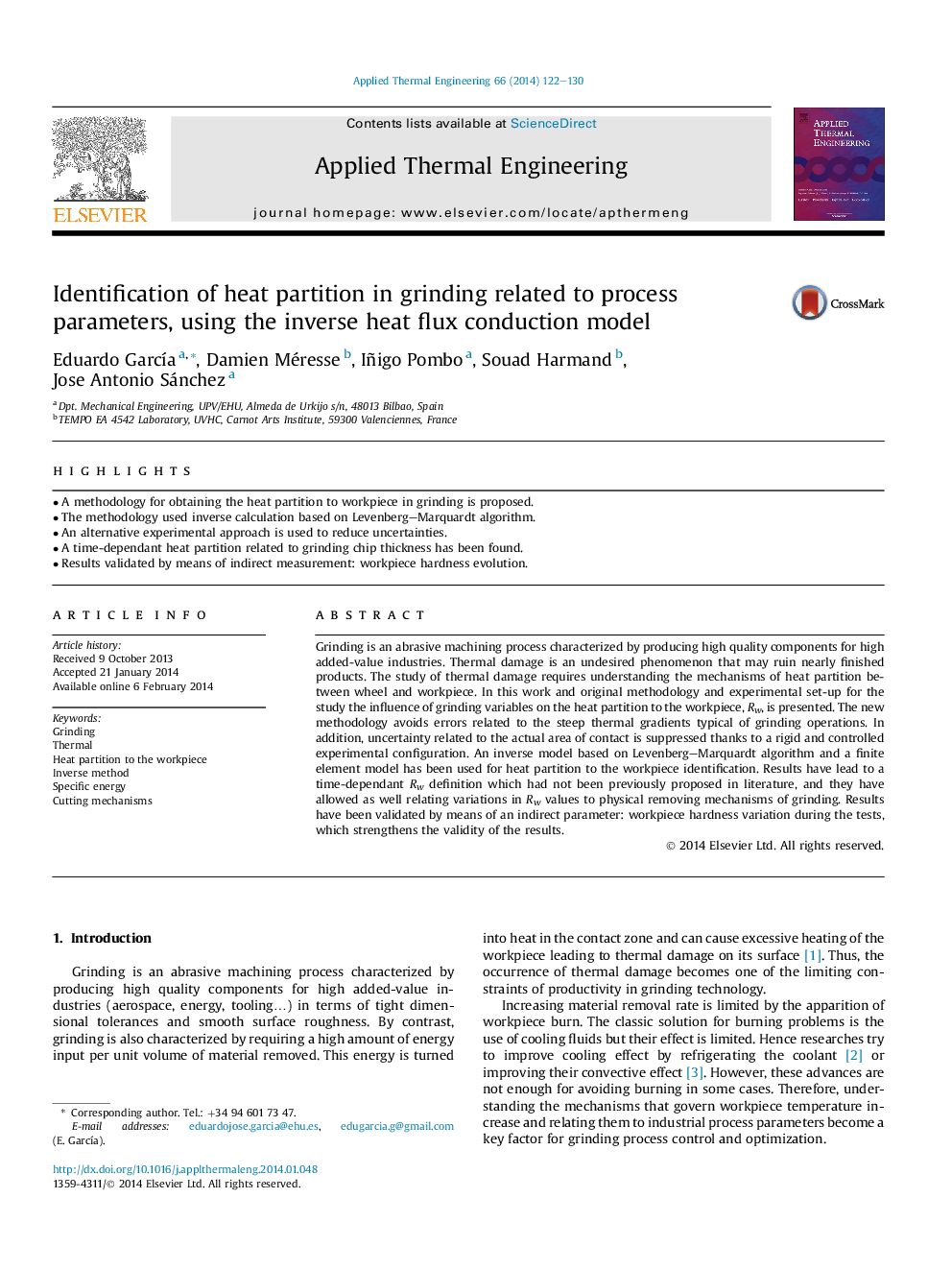| کد مقاله | کد نشریه | سال انتشار | مقاله انگلیسی | نسخه تمام متن |
|---|---|---|---|---|
| 646664 | 1457159 | 2014 | 9 صفحه PDF | دانلود رایگان |
• A methodology for obtaining the heat partition to workpiece in grinding is proposed.
• The methodology used inverse calculation based on Levenberg–Marquardt algorithm.
• An alternative experimental approach is used to reduce uncertainties.
• A time-dependant heat partition related to grinding chip thickness has been found.
• Results validated by means of indirect measurement: workpiece hardness evolution.
Grinding is an abrasive machining process characterized by producing high quality components for high added-value industries. Thermal damage is an undesired phenomenon that may ruin nearly finished products. The study of thermal damage requires understanding the mechanisms of heat partition between wheel and workpiece. In this work and original methodology and experimental set-up for the study the influence of grinding variables on the heat partition to the workpiece, Rw, is presented. The new methodology avoids errors related to the steep thermal gradients typical of grinding operations. In addition, uncertainty related to the actual area of contact is suppressed thanks to a rigid and controlled experimental configuration. An inverse model based on Levenberg–Marquardt algorithm and a finite element model has been used for heat partition to the workpiece identification. Results have lead to a time-dependant Rw definition which had not been previously proposed in literature, and they have allowed as well relating variations in Rw values to physical removing mechanisms of grinding. Results have been validated by means of an indirect parameter: workpiece hardness variation during the tests, which strengthens the validity of the results.
Journal: Applied Thermal Engineering - Volume 66, Issues 1–2, May 2014, Pages 122–130
